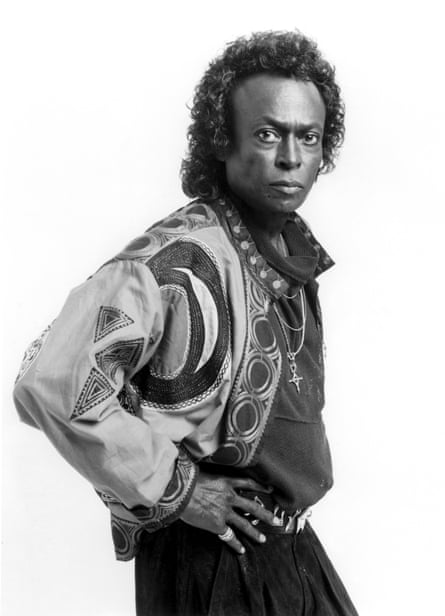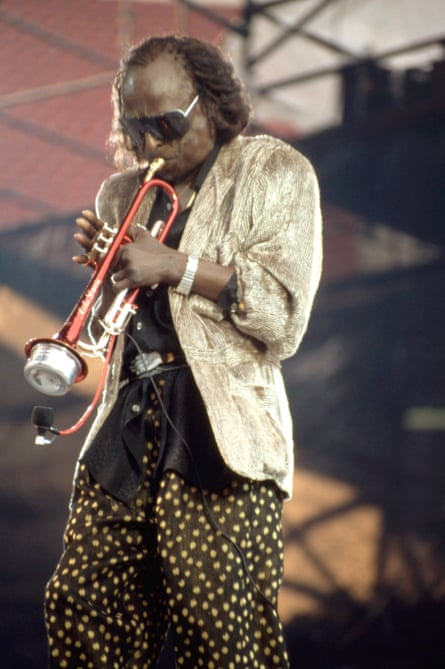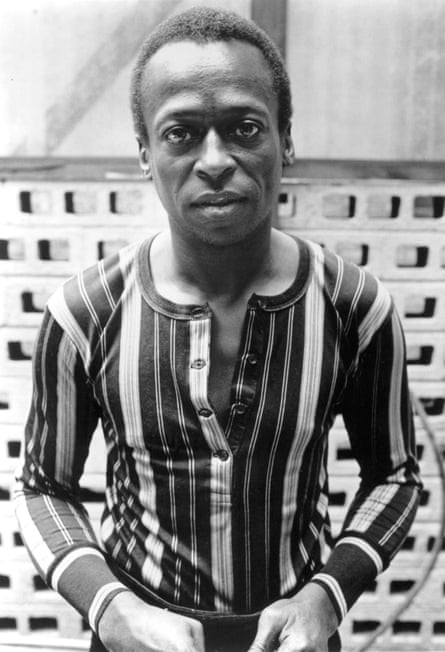Blue is the colour of the sky – and also of cool and melancholy understatement. So naturally, it’s synonymous with jazz, especially through 1959’s A Kind of Blue by Miles Davis, the bestselling jazz album of all time.
Yet it was green, and in particular a green button-down shirt, that announced Davis’s arrival as a style icon in postwar Britain. “He wore it on the cover of the Milestones album,” says John Simons, founder of Chiltern Street’s classic tailor
J Simons. “In terms of style, it was a very important image. He was beautifully dressed during this period – very neat and sharp.”
According to the 2008 BBC documentary British Style Genius, soon after the release of Milestones in 1958, every cool cat in London, including a young Charlie Watts before he became the Rolling Stones’ drummer, was wearing a green button-down shirt. Back then, jazz album covers (especially those by artists such as the Modern Jazz Quartet, Chet Baker and Miles Davis) doubled up as fashion plates, communicating a new style and attitude to the first generation of London mods.
Miles Ahead is out on Friday


The improvised, laid-back elegance epitomised by Davis’s new take on jazz was reflected in the way he dressed. Gone was the regal swagger, broad lapels and even broader shoulders of earlier band leaders such as Count Basie and Duke Ellington, and in came the narrow lapelled, soft-shouldered jackets and slim-cut, flat-front trousers of the American Ivy League. These were worn with Bass Weejun loafers and button-down shirts and knit ties from Brooks Brothers. It was a look that combined low-key American conservatism with a comfortable fleet-footedness.
“It was the new culture coming in after the war,” says Simons, a shop that pioneered this look in London. “Visually, it was a uniform that went hand in hand with music and art, particularly abstract art. It was new and interesting and in it’s own way egalitarian. Everyone could avail themselves of this look.”
During a flashback to this period in the forthcoming Davis bio pic, Miles Ahead, starring Don Cheadle, Davis describes himself as dressing “as clean as broke dick dog”.

Today, almost every commercial menswear brand, from J Crew and Uniqlo to Ralph Lauren and Gant, serves up a version of what the original jazz modernists wore in the 50s. The Ivy League look also spread to Japan, where brands such as Beams, Kamakura and United Arrows make clothes to the same exacting specifications as they were in the US.
That alone would have been enough to carve out a place for Davis on the Mount Rushmore of men’s style. But instead, in a move that would appall jazz purists, Davis flew headlong into the late 60s and early 70s with a new sound and look that jettisoned cool modernism in favour of a wildly flamboyant bohemianism, in part inspired by his friend Jimi Hendrix.

The albums Bitches Brew and In a Silent way are emblematic of this era, and his signature look comprised loose Indian shirts, suede pants from the young African-American designer Stephen Burrows and dashikis. Later on, he wore huge bug-eyed sunglasses, optical art for the face that reinforced his otherworldly charisma. All of which can be seen in one form or another on the men’s and women’s Gucci catwalks.
Miles Ahead catches up with Davis in 1979, and the clean-cut elegance of the 50s and 60s seems not only like another time, but from an entirely different planet. However, it is one that is relevant to men’s fashion in 2016.
“We’re seeing men loosen up again after a period of strict conservatism in menswear,” says Timothy Everest, a tailor who counts the Rolling Stones as clients: “The 70s are an easy decade to knock, but lots of what was happening then had very precise historical references but done in a very exaggerated, pimped out way. I like Miles Davis’s look during this period; it’s a kind of dysfunctional tailoring.”
Davis arguably invented hip-hop swagger before Puff Daddy et al were even born. In his 1989 biography, co-written with Quentin Troupe, Davis describes being pulled over by the police outside the Plaza Hotel, ostensibly for not having a registration sticker. However, Davis believes the real reason may have been because: “I was sitting in my red Ferrari, dressed in a turban, cobra-skinned pants and a sheepskin coat, with a real fine woman.”

Davis also survived a drive-by shooting in 1969 in the same red Ferrari. This time he was rocking a loose-fitting suit made out of leather: “If it hadn’t been for that leather jacket and the fact they shot through the door of a well-built Ferrari, I would have been dead.”

Fortunately he lived long enough to make a comeback in the 1980s, dabbling in the nascent hip-hop culture and discovering Japanese designers such as Issey Miyake and Kohshin Satoh, for whom he modelled with Andy Warhol in 1987, before his death in 1991.
Joe Casely-Hayford of the father-and-son design duo Casely Hayford says: “He was always changing and evolving. He was well versed in culture and this enabled him to constantly create and develop different aspects of his persona. I’ve been influenced by his lack of creative boundaries. His album covers or paintings provide as much inspiration as his wardrobe.”
And perhaps it’s this ability to switch it up that is his true legacy and inspiration. “I love the way he could redefine himself for each decade and this is a trait I have aspired to. He will continue to present a new and relevant signature style for each generation. The mark of a true genius.”

Comments (…)
Sign in or create your Guardian account to join the discussion